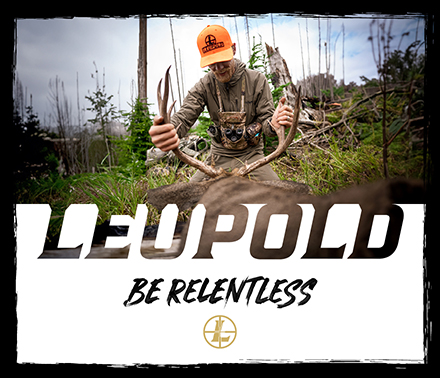Hunting for a Bow
Archery is one of the quickest growing facets of the hunting industry in North America. Those who have been at it for any length of time will tell you it’s a challenging way to foster the growth of hunting skills. Whether you’re an experienced archer or are just thinking about trying it out, there are some amazing new bows that need to be tested to be fully appreciated.
At a local archery shop I asked what most customers base their purchase on. I was surprised to learn most hunters want to shoot what their friends are using. Others have watched television shows, read magazines, or simply want the newest, fastest and best. But how can we determine what bow or features are right for you?
Testing testing
Technologies in the archery world are growing by leaps and bounds. New bows are lighter, faster, smaller, stronger, and durable. They’re easier to use and fun to shoot. If you’re still using old equipment, try venturing into your local archery shop for some first-hand experience and see what you’re missing. If you’re able, go to several shops. Try each model. Every bow will feel different in your hand, and when you find the right one, you’ll know. Give up the notion of shooting the same bow as a celebrity or people you hunt with.
Speed and draw weight
Speed and draw weight are the biggest criteria for some archers. You don’t have to pull ridiculous draw weight anymore. Most bows shoot so fast that you gain only two feet per second for each pound of draw weight that you increase on your bow. If you set your bow at 50 pounds and it shoots 260 feet per second with a hunting arrow and broadhead, it will only shoot 280 feet per second at 60 pounds draw weight. While the difference is negligible on your sight pins, the lighter draw weight is easier to pull in all conditions. You can practice longer and shoot more accurately. It doesn’t matter how much weight you’re pulling—your success rate in the field is the truer indicator.
Brace height
Brace height is one of the most important considerations. In my mind, it is the forgiveness factor in shooting your bow consistently. A short brace height can generate more speed, but makes a bow extremely jumpy—like the string is waiting to be released before you squeeze the release trigger. A longer brace height is more forgiving when drawing and shooting your bow. You’ll feel it. Finding that balance or comfort zone is important, and the only way to do that is by shooting a variety of bows with different brace heights.
Draw length
The overall length of a bow matters too. If you have a long draw, you want a longer bow. Anyone with a short axle-to-axle bow, with a longer draw length, will notice the string creates a more acute angle, making it twitchier or finicky to shoot. As an overall recommendation, shooters with longer draw lengths should consider longer axle-to-axle bows—33-inches or more.
Get measured for draw length. Don’t compromise or be talked into something that might work. For youth look for a bow with modules, or adjustment in draw length, so it can be can used as they grow.
Price and value
If price dictates your purchase, concentrate on a bow package. Several companies provide a bow set up with an arrow rest, sight, D-loop, quiver and vibration stabilizers. Some even include arrows. The packages provide excellent value and are recommended starting points for someone new to archery. Consider them too if you’re making a substantial upgrade from an older bow. New bows, even value-priced ones, will drastically outperform equipment from just five or six years ago. If you’re going back ten years or more, the difference will be astonishing.
Price range on package bows start at around $400 and go up from there. Once you’ve been into archery for some time you may want to upgrade to a high-tech bot, but they come at a price. Setting up a top-of-the-line bow, with accessories, will start at about $1,000 and go up from there. If you’re a serious bow hunter aim for a top quality, high-performance bow with all the accessories that suit you best. It is no different than rifle hunters buying the best firearms and optics to do what they love most.
Test different bows
With so many choices out there shooting different bows is the only way to determine what is best for you. Don’t be pressured. Shoot three arrows and see which bow groups the best without bias. Good shop owners will ensure you get equipment adjusted for you specifically. If you feel pressured to buy something not right for you, find a new place to shop!
New bows are amazing and keeping up with their advancements in features and technologies is the tough part. Luckily there are no bad choices with any of the new bows. Your perfect bow is out there—you just need to go and find it.






